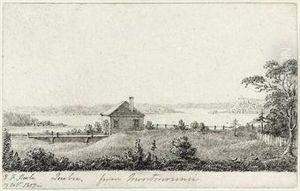Elizabeth Francis Amherst Hale Paintings
Elizabeth Francis Amherst Hale, born in 1762, was a notable figure in the realm of art and culture during the late 18th and early 19th centuries. Despite the challenges faced by women in the arts during this period, Hale's contributions and her ability to navigate through these constraints are a testament to her skill and determination. Her life and work offer a fascinating glimpse into the artistic and societal landscapes of her time.
Elizabeth Francis Amherst Hale's journey in the arts was influenced by her social position and the cultural opportunities available to women of her status. During this era, women were largely excluded from formal art institutions and academies, which significantly limited their opportunities for professional training and public recognition. However, Hale and her contemporaries found alternative routes to expression and education, such as private tutoring, patronage, and the support of intellectual circles that included both men and women.
Not much is detailed about Hale's specific artistic achievements or the medium she primarily worked in, which reflects the broader issue of historical documentation and recognition of women's contributions to art. Nevertheless, her legacy is important for understanding the broader context of women's roles in art history and the gradual shift towards more inclusive recognition of artists regardless of gender.
Hale's life spanned a period of significant change, both politically and culturally, including the American and French Revolutions, the Napoleonic Wars, and the early stages of the Industrial Revolution. These events undoubtedly influenced the themes and methods of artists of her time, including Hale. Her ability to produce art in this context, navigating the constraints imposed on her as a woman, highlights her resilience and creativity.
Elizabeth Francis Amherst Hale passed away in 1849, leaving behind a legacy that, while not widely recognized in mainstream art history, offers valuable insights into the challenges and achievements of female artists in the 18th and early 19th centuries. Her life and work serve as an inspiration for future generations of artists, demonstrating the importance of persistence and innovation in the face of societal barriers.
